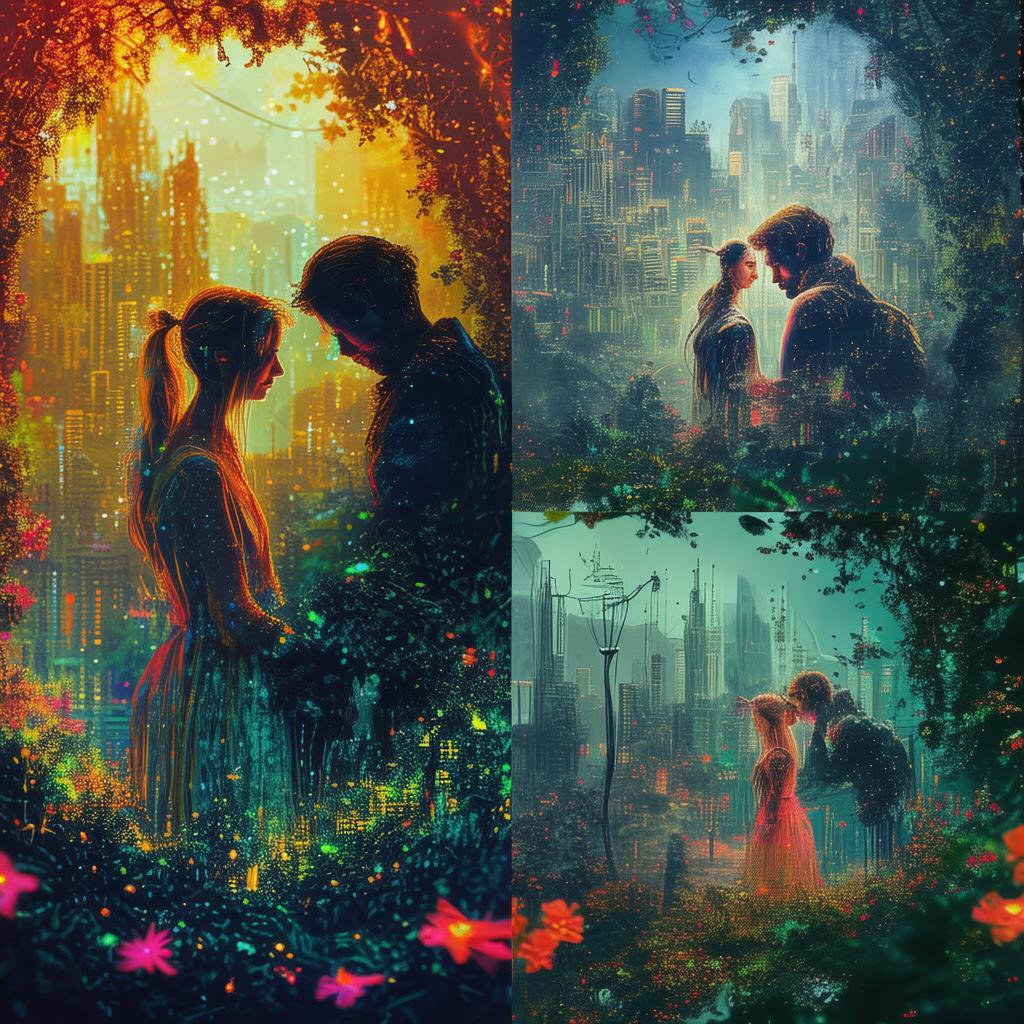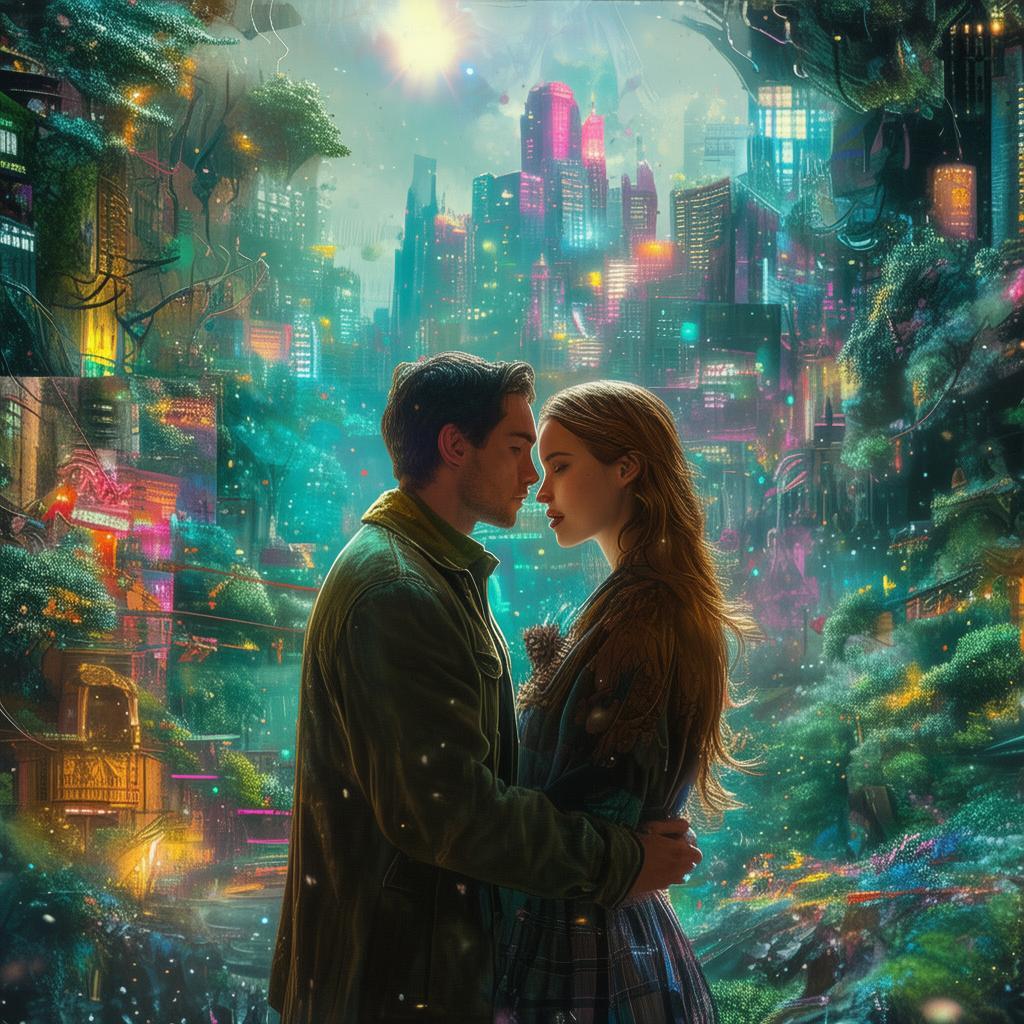Whispers of Time: The Artist's Paradox
In the bustling heart of Paris, under the soft glow of streetlights, stood a quaint little bookstore. The air was thick with the scent of aged paper and the promise of forgotten tales. Among the labyrinthine aisles, young and old alike were drawn to the enigmatic allure of time-traveling stories. Such was the case for Eliza, a 27-year-old artist whose life was as vibrant as her paintings were abstract.
Eliza had always been fascinated by the idea of time-travel, but it wasn't until she stumbled upon an old, dusty diary hidden behind a stack of dusty romance novels that her life took an unexpected turn. The diary, bound in leather and adorned with intricate gold leaf, seemed to whisper secrets of love and loss from the past.
The first entry read:
> "I am Eliza, and I am in love. My heart belongs to a man who will never know my love. Time is a cruel master, and I am its pawn."
Eliza's curiosity was piqued. She spent hours reading the diary, each entry a love story from a different era. She found herself transported to the 19th century, where a young poet named Arthur was torn between his love for a noblewoman and his desire to follow his heart. Then, she was in the 16th century, where a painter named Isabella was forbidden to love the man she adored, a man who was to become a legend in his own right.

Each story was a tapestry of passion, betrayal, and sacrifice. Eliza found herself empathizing with the characters, feeling their joys and sorrows as if they were her own. But as she delved deeper into the diary, she began to notice something strange: the names and dates were eerily similar to her own life.
The diary revealed that Eliza had the power to travel through time, not as a visitor, but as a participant in the lives of the lovers she read about. She was the artist who painted the portraits of Isabella and Arthur, the woman who whispered their secrets, and the voice that would guide them through their trials.
Eliza's world was shattered when she realized that the diary was not just a collection of tales but a guidebook to her own life. She was the time-traveling artist, the one who could change the course of history, but only by choosing between the lovers she had come to care for.
As she navigated through the lives of these lovers, Eliza grappled with the concept of fate versus free will. She witnessed the tragic consequences of love that was never meant to be, and she saw the power of love that could overcome even the most insurmountable odds.
In the 19th century, she was the voice that guided Arthur to choose love over his noble heritage. In the 16th century, she was the muse that inspired Isabella to create her greatest masterpiece, even as she knew her love would never be returned.
But as Eliza delved deeper, she discovered that her own love story was intertwined with the diaries' tales. She had a chance to rewrite her own fate, but at what cost?
The diary revealed that her own love story was one of forbidden love, a love that could never be. She was destined to be with a man who was to become a great artist, but their paths were set in stone, a paradox that only she could solve.
Eliza found herself at a crossroads. She could continue to live her life as it was, knowing that her love would never be realized, or she could choose to alter the past, potentially changing the course of history and her own future.
As the story unfolded, Eliza's choices became more and more difficult. She witnessed the heartache of lovers who were torn apart by circumstances beyond their control, and she realized that her own love was no different.
In the end, Eliza had to make a choice. She could continue to live in the shadows, her love unspoken and unrequited, or she could step into the light and embrace her destiny.
She chose the latter.
Eliza returned to her own time, her heart heavy with the weight of the past and the promise of the future. She painted a portrait of the lovers she had come to know and love, capturing their essence in every stroke of her brush.
In the reflection of her canvas, she saw not just the faces of the lovers, but her own. She realized that her own love story was not one of loss, but one of resilience. She had the power to change her fate, and she had chosen to love.
The final entry in the diary read:
> "I am Eliza, and I have found my love. Time is a cruel master, but love is stronger. I have chosen to live, to love, and to create. And in doing so, I have become the artist who will forever be remembered."
Eliza closed the diary, her heart filled with a sense of peace and fulfillment. She had faced the paradox of her own existence and chosen love. And as she stood in the quiet of her studio, she knew that her art, like her love, would transcend time.
✨ Original Statement ✨
All articles published on this website (including but not limited to text, images, videos, and other content) are original or authorized for reposting and are protected by relevant laws. Without the explicit written permission of this website, no individual or organization may copy, modify, repost, or use the content for commercial purposes.
If you need to quote or cooperate, please contact this site for authorization. We reserve the right to pursue legal responsibility for any unauthorized use.
Hereby declared.









